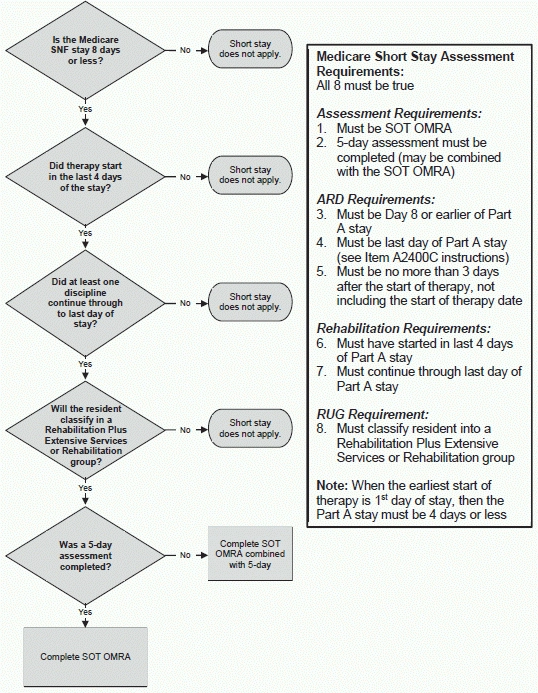Heed These Other RAI Manual Revisions: ICD-10, Pressure Ulcers & More
Are you coding healed pressure ulcers correctly?
Although most of the significant changes to the RAI Manual are in Chapter 2, you should also pay attention to some important revisions contained in Chapters 3, 5, and 6. And some of these crucial changes relate to the launch of ICD-10, which coincided with the RAI Manual’s release this October.
In the updated MDS 3.0 Item Sets v1.13.2, which are effective Oct. 1, 2015, there are no new items and no deleted items, said Cheryl Shiffer, RN, BSN, RAC-CT, RAI Coordinator for the Texas Department of Aging and Disability Services, in a recent training session. There are also no modified items, except for a revised footnote for Item C1300 — Signs and Symptoms of Delirium that simply references a copyright notice.
Notice that Section I Now Accommodates ICD-10
But there is some new language in Section I — Active Diagnoses that’s important, especially with the new ICD-10-CM in effect as of Oct. 1, 2015. On page I-4, the RAI Manual now reads:
“If an individual is receiving aftercare following a hospitalization, a Z code may be assigned. Z codes cover situations where a patient requires continued care for healing, recovery, or long-term consequences of a disease when initial treatment for that disease has already been performed. When Z codes are used, another diagnosis for the related primary medical condition should be checked in items I0100-I7900 or entered in I8000.”
The Centers for Medicare & Medicaid Services (CMS) also provides the following link to access ICD-10-CM coding guidance with links to appendices: http://library.ahima.org/xpedio/groups/public/documents/ahima/bok1_050855.hcsp?dDocName=bok1_050855.
Instead of using V codes under ICD-9, you must now use the new Z codes under ICD-10. The link sends you to the American Health Information Management Association (AHIMA), which provides a plethora of information about ICD-10.
Beware: Banned Diagnoses May Be the Same Under ICD-10
In some states like Texas, you cannot code HIV/AIDS-related diagnoses on the MDS. Doing so could cause an error on your MDS submission, and may even become an MDS accuracy issue if it comes to surveyors’ attention, Shiffer warned.
Best bet: Check your state law for excluded diagnoses like those relating to HIV/AIDS. If you are unsure whether your state has excluded diagnosis codes for the MDS, you can contact your state RAI coordinator.
Get Clarification on Coding Healed Pressure Ulcers
In Section M — Skin Conditions, CMS replaced the phrase “unhealed (non-epithelized) pressure ulcer” with “unhealed pressure ulcer” throughout the section, according to an Oct. 7 analysis by Washington, D.C.-based Leading Age. Also, CMS replaced the phrase “necrotic tissue (eschar)” with “eschar” throughout the RAI Manual.
An important update to this section is if a resident had a pressure ulcer on the last assessment and it is now healed, you should complete Item M0900 — Healed Pressure Ulcers, Shiffer said. If a resident had a pressure ulcer that healed during the look-back period of the current assessment but there was no documented pressure ulcer on the prior assessment, code M0900A as 0 — No, and then skip to M1030 — Number of Venous and Arterial Ulcers.
You would not code the pressure ulcer as a healed ulcer if it wasn’t coded on the prior assessment, Shiffer instructed. “You can only code healed ulcers that were noted on a previous assessment.” So if a pressure ulcer develops and heals between assessments and you didn’t code it on a previous assessment, you wouldn’t code it in M0300 — Current Number of Unhealed Pressure Ulcers at Each Stage at all, nor would you code it in M0900.
Caveat: But if a resident had a pressure ulcer noted in the last assessment that’s not healed (but is healed while completing the current assessment), you also wouldn’t code it in M0300. You would, however, code it as a healed pressure ulcer in M0900.
“Really, this information is not new at all; it was in the RAI Manual previously,” Shiffer noted. CMS has just changed the language to make it clearer.
How Chapter 5 Revisions Impact Section X
CMS also made some revisions to Chapter 5 of the RAI Manual, which actually impact Section X — Correction Request in Chapter 3. First, CMS clarifies that you may either modify or inactivate the MDS when you’ve incorrectly coded the reason for the assessment in:
“Basically, as long as the Item Set Code (ISC) does not change when changing reasons for assessment, a modification may be used,” Shiffer noted. But to determine whether you need to either modify or inactivate the MDS record, you should reference Chapter 5, Section 5-7, “Correcting Errors in MDS Records That Have Been Accepted Into the QIES ASAP System.”
Reference the New Medicare Short Stay Assessment Algorithm
In Chapter 6, CMS removed all references to the Readmission/Return assessment from the Medicare Short Stay Assessment Algorithm. You can find the new algorithm on page 6-21 of the RAI Manual:



